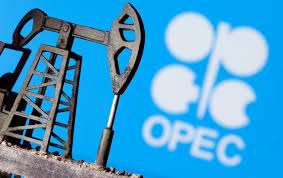OPEC+ Confirms Gradual Oil Output Increase Amid Market Uncertainty
Current Affairs International IssuesPosted by newadmin on 2025-02-05 08:56:40 |
Share: Facebook | Twitter | Whatsapp | Linkedin Visits: 21

OPEC+ has reaffirmed its strategy to gradually increase oil production beginning in April 2025. This decision comes against a backdrop of ongoing geopolitical tensions and fluctuating oil prices. The group has also made a significant shift in its monitoring approach by replacing the U.S. Energy Information Administration (EIA) with new firms for assessing production metrics.
OPEC+ is a coalition of 22 oil-exporting nations, including the original 12 OPEC members and several non-OPEC countries. Established in late 2016, the alliance was formed to encourage cooperation between OPEC and non-OPEC producers with the goal of stabilizing the global oil market. The organization plays a crucial role in regulating oil production to balance supply and demand.
During a recent online meeting, OPEC+ ministers upheld their decision to gradually unwind a previous output cut of 2.2 million barrels per day. Starting in April, the group plans an initial production increase of 138,000 barrels per day per month. This decision reflects concerns over weak demand and an increase in oil supply from non-member countries.
As part of its latest policy adjustments, OPEC+ has decided to remove the U.S. EIA from its list of secondary sources used for production monitoring. Instead, it will now rely on data from Kpler, OilX, and ESAI. This change, according to OPEC+, is due to communication challenges rather than political motivations. The goal of the transition is to enhance the accuracy and reliability of production assessments.
The decision to adjust production and monitoring sources occurs amid broader geopolitical concerns. The imposition of U.S. sanctions on Russian oil supplies has influenced market dynamics, as has the stance of former U.S. President Donald Trump, who has urged OPEC to increase production in an effort to lower oil prices. Trump has claimed that high oil prices benefit Russia, particularly in the context of its ongoing conflict in Ukraine.
Oil prices have shown significant volatility in recent months. Brent crude reached $83 per barrel in January before dropping below $77. This fluctuation has been driven by fears of supply disruptions, along with the impact of tariffs imposed by the U.S. on key trading partners. The uncertainty surrounding these factors has contributed to instability in oil markets.
OPEC itself has a long history, having been founded in 1960 by Iran, Iraq, Kuwait, Saudi Arabia, and Venezuela. Since then, it has expanded to include additional members and now operates from its headquarters in Vienna, Austria. The organization was created with the aim of coordinating oil policies among member nations to ensure fair pricing and a stable supply to global markets.
A key component of the oil market is Brent crude, which serves as the global benchmark for pricing. Extracted from fields in the North Sea, Brent is classified as a light, sweet crude due to its low density and low sulfur content, making it ideal for refining into products like gasoline. Its water-borne nature allows for easier transport to international markets, further reinforcing its importance in the global energy landscape.
Search
Categories
Recent News
- Bihar's Top Cop Opens Doors to Public Grievances
- Hyderabad Gears Up for Presidential Visit: Traffic Diversions Announced
- Hyderabad Expressway Gridlock: Three-Car Pile-Up Causes Chaos
- Hyderabad Gears Up: Security Measures for Presidential Visit
- Hyderabad's Rs 23 Lakh Scam: Fake Trading App Dupes Investors
- Pinkathon Hyderabad: Empowering Women, One Step at a Time
- Hyderabad's Drug Supply Chain Unravelled
- Hyderabad's New Year's Eve: Safety Meets Celebration
Popular News
- Navigating IPO Market Dynamics Amid Volatility and Regulatory Changes
- Innovative Green Practices and Environmental Initiative
- Massive Worldwide Microsoft Outage Disrupts Multiple Sectors
- తెలుగుదేశం పార్టీ - పేదరికాన్ని నిర్మూలించడంలో వాగ్దానం
- Universities Embrace Remote Learning Technologies Amidst Ongoing Pandemic